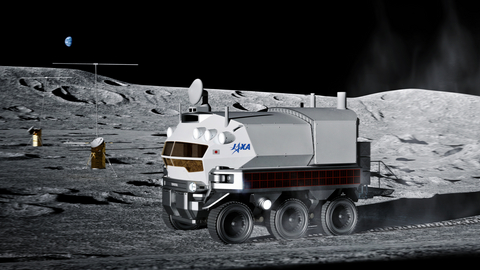Yokogawa Electric Corporation has announced that it will collaborate with Toyota Motor Corporation on research and development for Japan’s first manned pressurised lunar rover.
The rover, nicknamed the “Lunar Cruiser”, is being jointly developed by Toyota and the Japan Aerospace Exploration Agency (JAXA) as part of the country’s growing ambitions in space exploration. Scheduled for launch in 2031 or later, the vehicle is expected to transform the scope of lunar missions.
Expanding lunar exploration
Unlike previous exploration vehicles, the Lunar Cruiser will serve as Japan’s first standalone manned space system, capable of transporting astronauts across the Moon’s surface in a pressurised cabin.
It will also be designed to function without a crew, using remote-control systems that allow it to continue exploration when astronauts are not on board. Officials said this capability will enable continuous scientific operations and greater resilience in harsh lunar conditions.
Yokogawa’s role
Under the newly signed agreements, Yokogawa will design and procure prototype measurement and control equipment, including systems for the rover’s control platform and battery measurement.
Yokogawa has long supplied reliable control systems and precision measurement instruments for industries operating in extreme environments. The company’s experience, it said, made it a natural partner for Toyota in advancing conceptual studies into working prototypes.
Hidehito Shiratsu, head of Yokogawa’s Space Business Development Office, said the collaboration was a milestone for the company’s ambitions in aerospace.
“We are very excited to collaborate with Toyota on the R&D of measurement and control equipment for the manned pressurised rover, which will play a crucial role in enabling continuous lunar exploration,” he said.
He added that lessons learned from the project would strengthen Yokogawa’s existing technologies used in industries on Earth, from the deep sea to the polar regions.
A new era for Japan’s space sector
The agreement reflects a wider trend in which government space agencies and private enterprises are stepping up efforts to expand lunar exploration. In recent years, several commercial entities have attempted lunar landings, and spacefaring nations are increasingly viewing the Moon as a strategic gateway for future exploration.
For Japan, the Lunar Cruiser represents not just a technological achievement but also a strategic foothold in the new space race.
Yokogawa confirmed that it sees space as a “key area for exploration” under its medium-term business plan, Growth for Sustainability 2028. The company said it would continue working with Toyota on further development and explore additional applications for the advanced technologies being pioneered.
If successful, the Lunar Cruiser will allow astronauts to explore larger areas of the lunar surface and conduct extended missions, potentially laying the groundwork for longer-term human presence beyond Earth.

